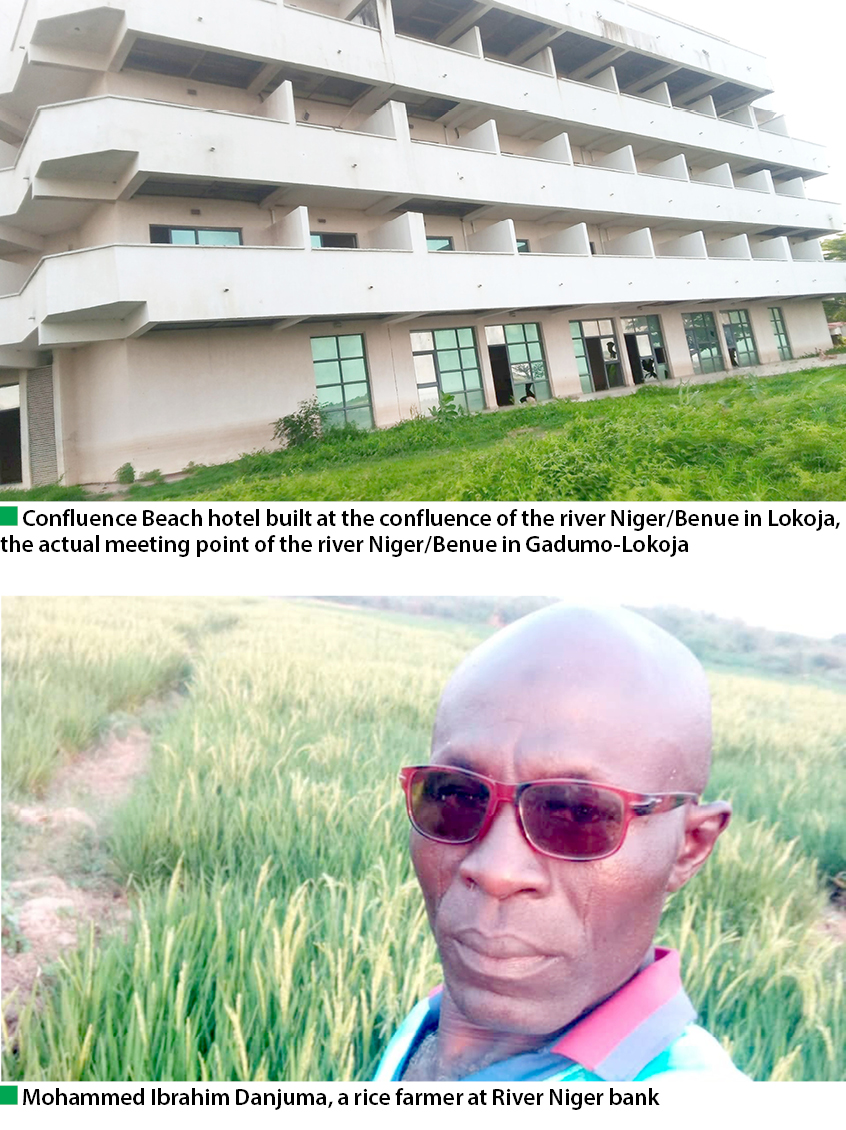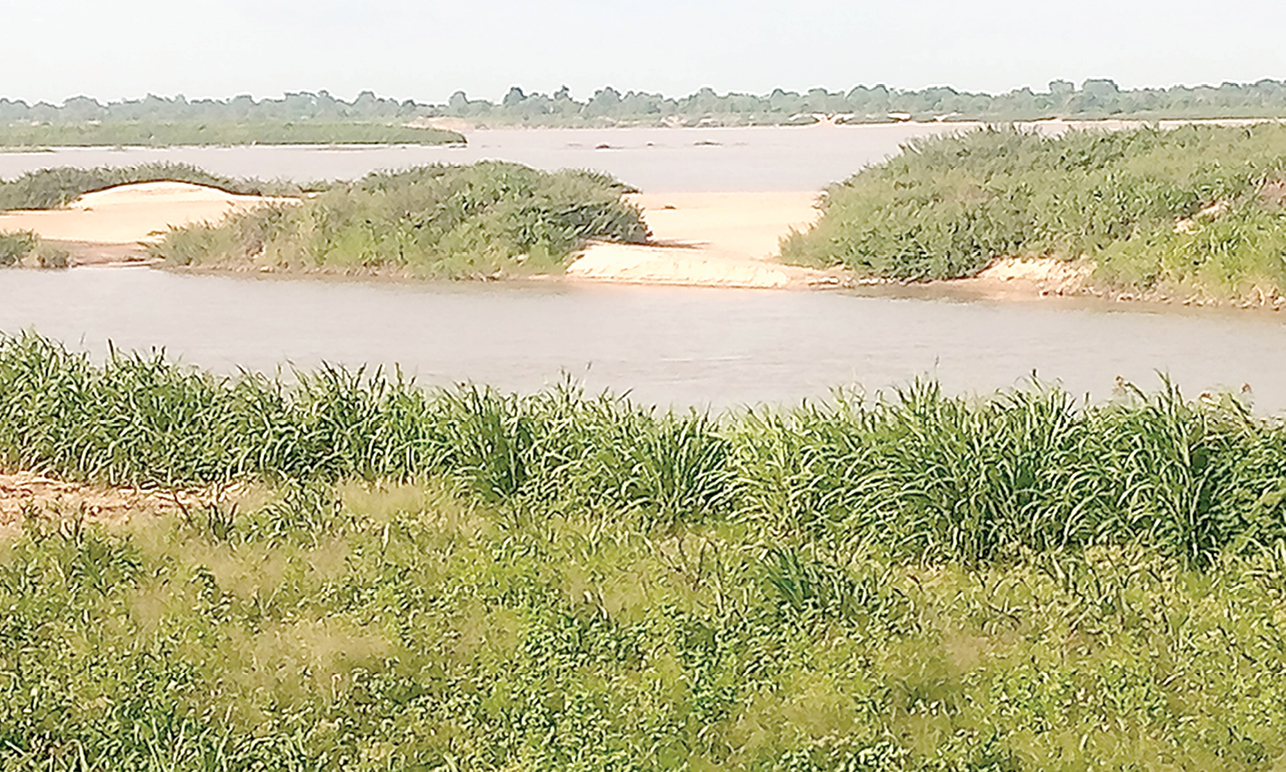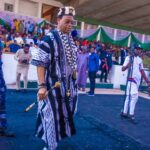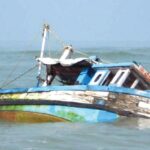Rivers Niger and Benue holds a prominent and economic importanve in Nigeria. However, this very important goldmine has been neglected by relevant authorities. Daily Trust on Sunday spotlights the issues
The watercourse of both rivers in the ecosystem of Kogi State displays an awesome sight and is loaded with natural treasures that have been sustaining every living thing around it.
These great rivers, which derive its source from two different countries in the African continent, converge and dissolve into each other at Lokoja, the capital of the state.
Sandwiching the rivers as they flow down the eastern part of Nigeria are valleys, mountains, gullies, rocks and lush vegetations fertilised with organic materials and mineral deposits that sustain living things, including mankind, animals and plants.
- Inside Kano’s lucrative ostrich farm, where chick costs N250,000
- 10th House: Opposition scrambles for minority leadership positions
In fact, both rivers remain nature’s expression of service to humanity in the confluence areas of the country.
Also, the blooming nature of the lush vegetation and the plenty game in the forest of the confluence areas where the great rivers flow towards the southern part of the country attest to the fact that the flora and fauna are at home with the great rivers.
River Niger in Kogi
From its flowing course through Baro in Niger State, River Niger, in a snake-like movement, enters Kogi as it passes through Kupa, Budon-Egan, Kotonkarfei, meeting River Benue in Lokoja, which traverses through Markurdi in Benue State to Bagana via Mozum to the capital city.
With both rivers becoming one in Lokoja, it flows through Ajaokuta, Itobe, Idah and Onyedega in Ibaji land and enters into Anambra State, thereafter forming a delta before it dissolves into the Gulf of Guinea in the Atlantic Ocean in southern Nigeria.
The great rivers, therefore, are a source of livelihood for the various communities and ethnic nationalities that have lived at its bank for centuries.
According to a farmer and resident of Kabawa-Lokoja, Mohammed Ibrahim Danjuma, who claimed to have been into rice farming at the bank of the river for decades, citizens in the state count themselves as being privileged to settle there, particularly at the point where both rivers converge on Lokoja city.
Danjuma told our correspondent at the bank of River Niger in Lokoja that his great grandfathers lived and survived near the rivers, cultivating rice and fishing.
He claimed to have inherited the land at the bank of the river from his forebears who had tilled it to eke a living for centuries before they transited to eternity.
“I was out today to spread chemical on the stubborn weeds called kirikiri , which always cripple our rice during farming. These weeds compete for soil nutrients with rice and make it stunted, a situation that results in poor yields.”
In the same vein, a young fisherman who simply identified himself as Abdulkareem, told our correspondent at Ganaja-Lokoja at the bank of River Niger that he inherited the fishing profession from his parents. He explained that it had became a source of income for him and his family.
“I always spend two to three hours everyday fishing on the river. I make N3,000 to N4,000 from fishing daily,” he said.
However, Danjuma, Abdulkareem and another rice and vegetable farmer, Hussein Amodu from Idah, said the people in the state and the country in general were yet to fully tap the potentials offered by both rivers.
“We are still groaning under the ancient practice of rice farming method, right from planting, weeding, harvesting to milling. This method affects the quality and quantity of our end produce, making it not to complete favourably with others in the business.
“Also, we still cook rice in the archaic and crude way, using drums, charcoal or firewood. Our crude way of fishing is energy sapping, and it is cumbersome to get the end produce.
“Rice farmers at the confluence shore, which runs into thousands of hectares, do not have the necessary modern rice farming machines, not even a milling machine to process our produce, nor fishing boats fitted with the necessary gadgets for operation.
“I assure you that if the necessary incentives are provided, rice and fish farmers at the confluence zone of River Niger from Kupa, Budon-Egan, Lokoja to Ibaji land, can feed Nigeria adequately and even export,” Amodu said.
Speaking on behalf of residents at the confluence zone of the river, Danjuma said, “We need assistance in form of credit facilities, modern fishing boats, processing equipment and education in modern technology in fishing, rice cultivation and milling.”
Our correspondent noted that in Kogi, many tributaries of both rivers influence socio-economic activities in 9 local government areas. For instance, Imabolo River, which derives it source from Ankpa town in the eastern part of the state, flows through Olamaboro Local Government Area into Anambra State as Oma Mbala river, dissolving into River Niger in Onitsha.
Also, sources of large network of lakes, streams or brooks and marshes across the state are traceable to these rivers.
Communities and inhabitants of Ajaokuta, Bassa, Ibaji, Idah, Igala-Mela, Odolu, Kogi, Kotonkarfei, Lokoja, Ofu and Omalla can literally be said to be surviving directly on the potentials of these rivers for centuries.
Also, settlers at Dekina, Adavi, Ankpa and Olamaboro benefit immensely from its main tributaries, which manifest in forms of streams, brooks or creeks to boost their agricultural practices and provision of portable water.

Mystery of River Niger
According to a historian and retired director in the federal civil service who has become a consultant, Dr Uthman Audu, River Niger is an enigma, defying the law of nature (gravitational force) to assist humanity.
“River Niger is only 150 miles from the Atlantic Ocean at its source in Guinea but decides to flow northwards from Guinea highlands, away from sea land , beating the law of gravity. This phenomenal water flow portends to mankind that providence made the river purposely for the good of humanity,” he said.
He added that in its natural course, the river flows from Fouta Djallon mountains (west-central Guinea, near Sierra Leone border) through Mali to Niger, where it curved downward into Republic of Benin, meeting River Benue from Adamawa plateau in the Republic of Cameroon at Lokoja in Nigeria.
Dr Audu stressed further that since 1795 when Mungo Park, a Scottish explorer, got to River Niger near Ségou in Mali as he travelled overland from The Gambia and exposed it to the outside world in July 1796, the river flows eastward. It appears on the world map as a potential goldmine waiting to be exploited to better humanities.
He reiterated that for centuries, the two rivers have created means of livelihood for the people living in its bank via agriculture, fishing and transport services, as well as extracting mineral resources beneath its surrounding lush vegetations.
Audu added that the federal government had established 42 different solid mineral deposits in commercial quantities at confluence areas of the rivers, which if harnessed properly, could turn things around to better the lot of residents and Nigerians in general.
“Solid mineral deposits like iron ore, bitumen, gold, coal, crude oil, Bauxite and limestone have been discovered in commercial quantities in the confluence of these great rivers.
“The presence of the rivers has created a veritable ground to extract and ferry these solid minerals from the state to the outside world freely and easily, where it can be turned to finished products.
“In the process, foreign exchange would be earned, employment and income is created and standard of living of the people is improved. Unfortunately, in the 21st century, our eyes are still closed to the potentials of these great rivers that have been a natural treasure to mankind,” Audu said
He added that the white men who colonised African nations saw the potentials of the rivers and made fortunes out of it to develop their economies.
“Having established the source, flow line and eventual end of the rivers, the white overlords used its route to channel labourers (slaves) and raw materials to feed their home industries, including creating markets for their finished goods during the industrial revolution era.
“Unfortunately, centuries after its discovery, Kogi and Nigeria , where both rivers meet, are yet to understand its potentials and properly harness it to better the lives of citizens,” he said.
An octogenarian, Pa Adebayo Ademola at Marine Quarters in Lokoja, said the flow line of River Niger was the fulcrum of colonial administration as the confluence town was the centre of attraction during the famous trans-Saharan caravan trade route.
“At the peak of economic activities during the trans-Sahara caravan trade through River Niger, coffee, cocoa, rubber, cotton, kola nuts and groundnuts, hide and skin, ivory, gold and slaves were brought from central, south, west and northern regions respectively to Lokoja in exchange for copper, books, salt, iron/glass, wears/clothes etc via the river to their respective countries.
“European merchants had their depots in Lokoja, Bagana, Idah communities at the banks of the rivers, where these items were stored before they were ferried to their countries.
“The relics of these stores are still on ground in Kpata-Lokoja, Bagana and Idah and a host of other towns along the flow line of the rivers,” Pa Ademola said.
He added that the allure of River Niger was irresistible, which made the colonial administration under Sir Frederick Lord Lugard, the governor-general of the then “Niger area” (Nigeria), to make Lokoja a capital of the British colony.
He said, “Until we realise the importance of River Niger as the colonial masters did and put it into use, we may not be able to exploit this natural treasure for better living and development of the state.”
But the Kogi State Government has been making efforts to develop rivers Niger/Benue to attract foreign investment and promote tourism to create employment and earn foreign exchange for decades with little success.
Records from the Kogi State Hotel Management and Tourism Board indicated that the building of Confluence Hotel in 1999 by the then governor, the late Prince Abubakar Audu, was aimed at the first phase of turning the meeting point of both rivers to tourists’ attraction to earn foreign exchange and others.
According to a tourist guide at the agency, Adewoye Olayinka Christopher, the confluence point was to be made accessible by a bridge from the confluence Beach Hotel in the second phase of its expansion that never was.
Our correspondent gathered that the confluence Beach Hotel is a ghost of its former self as it has collapsed due to policy somersaults of the subsequent administrations.
A former staff of the Confluence Beach Hotel, Idris Amedu, said that at its peak of service, prominent citizens, presidents, governors and captains of industries from far and wide held conferences, workshops, seminars and other social engagements in the hotel because of its position at the confluence of rivers Niger and Benue.
“The Confluence Beach Hotels, Lokoja, is now home to reptiles and collapsed structures. Plants and shrubs of all kinds have taken over. Former Governor Ibrahim Idris restructured it to meet up with a taste of modernity, but it was not completed before he left office.
“Captain Idris Wada, who took over from him, was on it before his government expired. The present government was reported to have “leased it out” to prospective investors; but despite this, the hotel lies in ruins and has become eyesore,” Amedu said.
Also, a report from the Kogi Agricultural Development Project (ADP) stated that Captain Idris Wada, in his attempt to boost rice production at the bank of River Niger, invested millions of naira, in conjunction with a Chinese company as technical partner.
This attempt, the source said, was short-lived as it ran into murky waters shortly after Wada’s administration expired .
Governor Yahaya Bello is not unmindful of the treasure of these rivers as his administration entered into agreement with a China Civil Engineering Construction Corporation (CCECC) giant to open up commercial activities through River Niger to the outside world recently.
The deputy managing director of the CCECC, Guo Wenjun, in a public- private partnership (PPP) agreement, expressed readiness to partner the state government in the construction of an inland transit port in Lokoja to link Warri-Burutu/Port Harcourt via Onitsha to open the flank to business via River Niger waterways.
“This will rapidly develop the movement of agricultural produce and solid mineral cargo to and from northern and southern Nigeria,” said the executive officer of the Kogi State Investment Promotion and Public Private Partnership Agency, Abdulkareem Siyaka, who represented the state government at the agreement signing ceremony in Abuja recently.
Challenges
“The rainy season is back and our fear of flooding has returned. The life of over 57communities in my domain is at stake,” the paramount ruler of Kotonkarfei community, the Ohimege Igu of Kotonkarfe, Alhaji Abdulrazaq Isah Koto said in an emotion-laden voice in his palace while receiving the managing director, Hydroelectric Power Producing Areas Development Commission (HYPPADEC), Alhaji Abubakar Yelwa, who was on a fact-finding tour in his community recently.
The fear of the paramount ruler of Kotonkarfei is the general expression of the communities settling at the bank of River Niger, who have been on edge over rampaging flooding due to global warming.
The global climatic change phenomenon has visited communities at the back of River Niger in Kogi with sorrow and pain as they have lost loved ones, farmlands, houses and entire communities in some cases, as well as access roads to flooding.
At a stakeholders’ meeting involving the HYPPADEC boss and his management team and leaders from the 9 local governments ravaged by flood on May 4, 2023, the issue of dredging the river was tabled and they resolved to pursue it to various levels in order to arrive at a desirable solution to incessant flooding.
However, the end may not be in sight for victims of Kogi flooding as the HYPPADEC boss said dredging of River Niger, River Benue and River Kaduna to check perennial flooding in the affected areas would cost over $20 billion.
A former president of Nigeria, the late Musa Ya’radua, on December 1, 2008 signed a N34.8bn contract for the dredging of the lower River Niger from Warri to Baro to make it navigable to boost socio-economic activities via waterways.
Yar’adua inaugurated the project on September 10, 2009 in Lokoja with a three-year completion plan, reviewing the contract sum upwards on November 2, 2011, with an additional approval of N8.5bn, putting the entire estimate cost of the project at N43.3bn.
The project appeared not to have yielded the desired dividend as majority of Kogi stakeholders are still crying for the dredging of the river to minimise incessant rampaging flooding in the state.
According to the National Inland Waterways Authority (NIWA, waterways in Nigeria include 12 major rivers, creeks, lagoons, lakes and intra-coastal waters, amounting to a passable distance of over 10,000km.
Senator Binta Masi Garba, the current chairperson of the Board of Directors of the NIWA, said that out of over 10,000km of waterways in the country, only 30 per cent, about 3,800km, were navigable all-year-round.

 Join Daily Trust WhatsApp Community For Quick Access To News and Happenings Around You.
Join Daily Trust WhatsApp Community For Quick Access To News and Happenings Around You.


